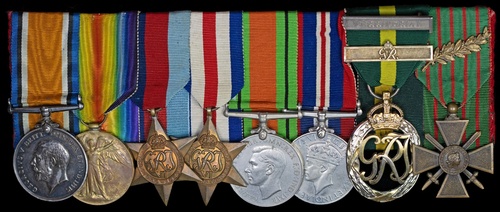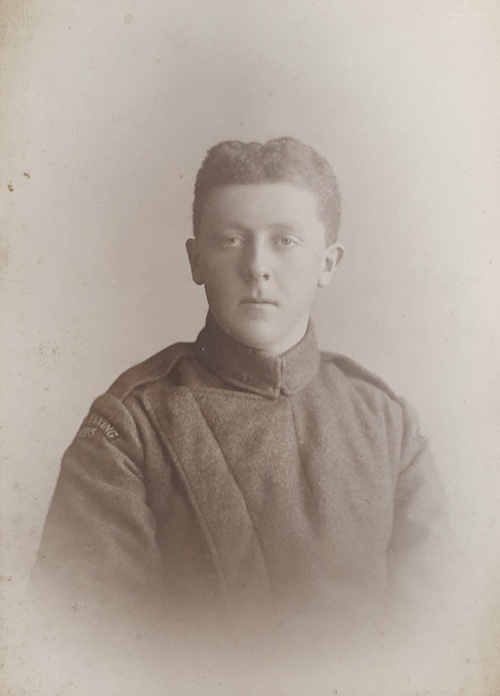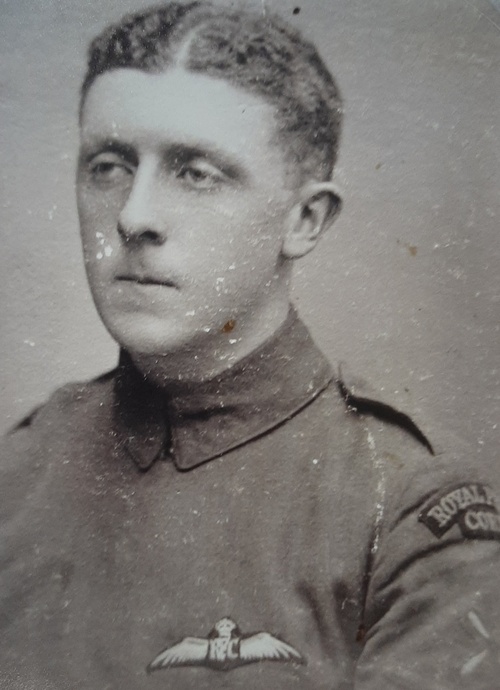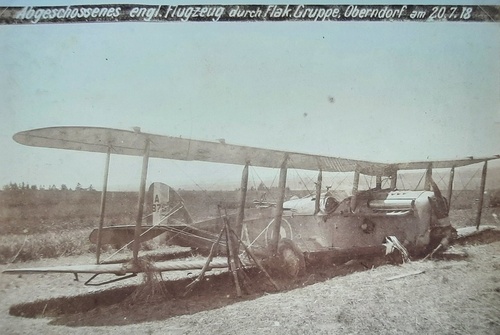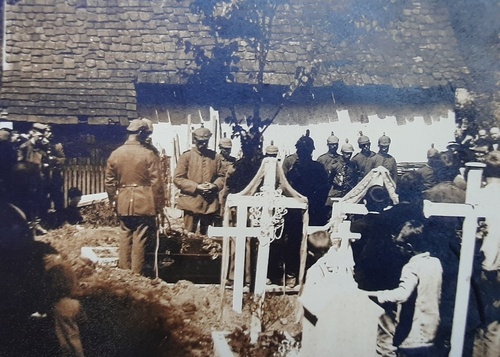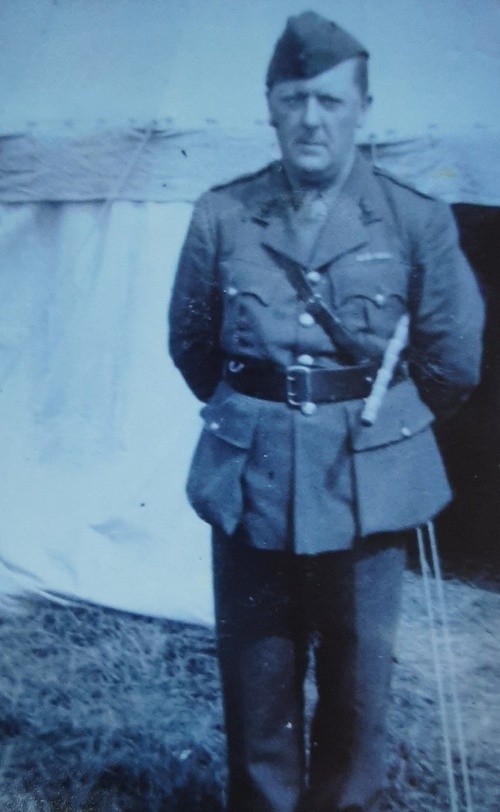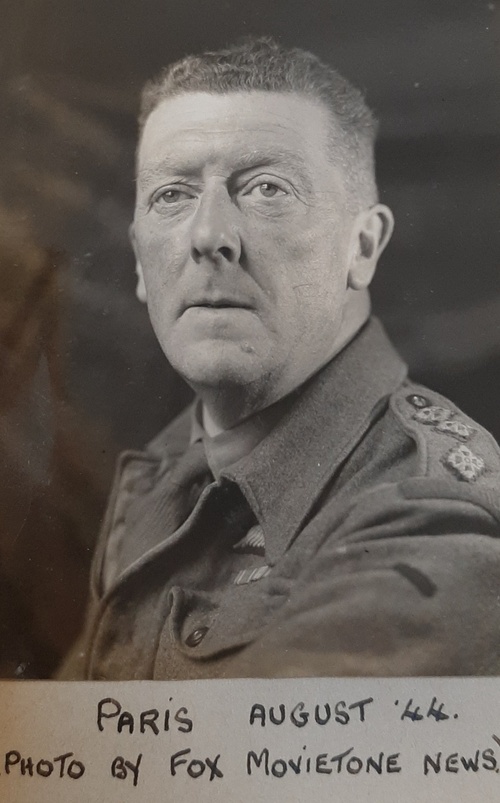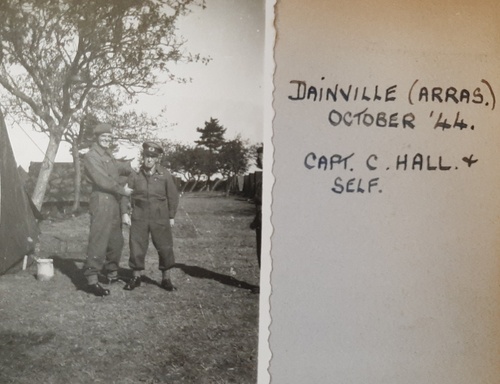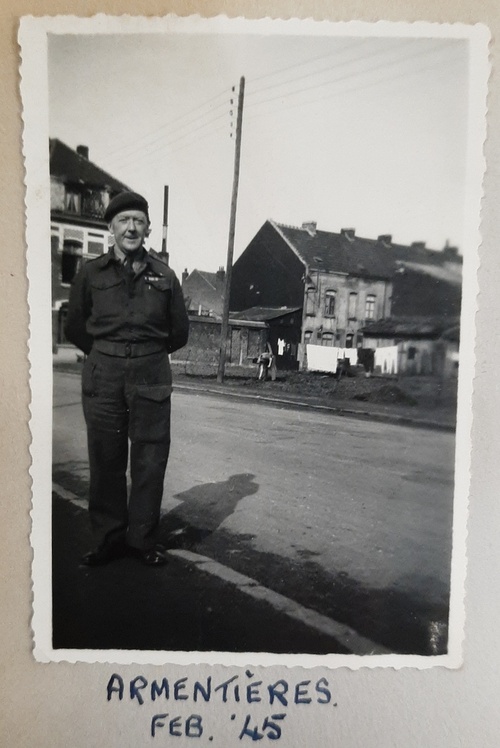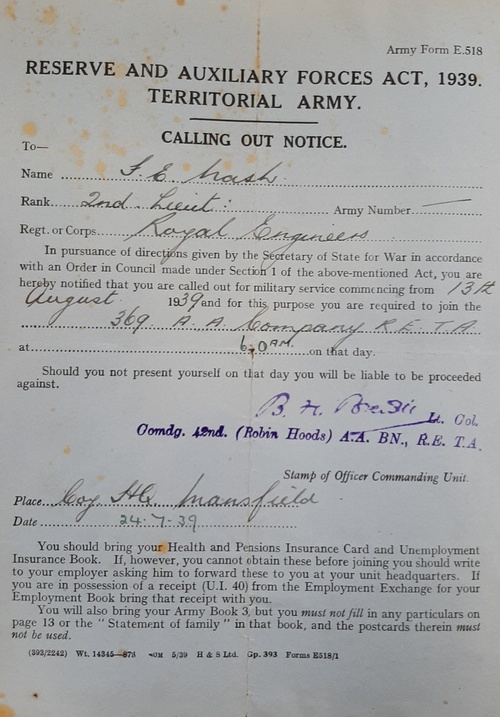Auction: 25001 - Orders, Decorations and Medals
Lot: 77
The scarce Sergeant-Pilot's group of eight awarded to Sergeant F. E. Nash, Royal Air Force, later Major, Royal Artillery, who shot down German Ace Paul Felsmann in 1918 and then became a Prisoner of War in the same action, coming away with a number of interesting photographs of his captivity and later wrote a diary of his experiences during the Second World War
British War and Victory Medals (10206. Sgt. F. E. Nash. R.A.F.); 1939-45 Star; France and Germany Star; Defence and War Medals 1939-45; Territorial Decoration, dated to the reverse '1945' with second award bar dated '1949'; France, Republic, Croix de Guerre, with Palme, mounted court-style for wear, overall good very fine (8)
Croix de Guerre confirmed in an amendment of The Chronicles of 55 Squadron R.F.C. - R.A.F.
Frank Elliot Nash was born at Kington, Herefordshire on 26 November 1897 and settled in Mansfield, Nottinghamshire later in life. Enlisting with the Royal Flying Corps on 19 October 1915 as an Armourer he underwent Pilot Training with No. 8 Squadron being awarded his Wings on 2 April 1918. Re-mustering as a Sergeant Mechanic on 2 April 1918 he joined No 55 Squadron as a pilot flying D.H.4.s on 8 July 1918.
Crash Landing
With this unit he launched a bombing mission over the Oberndorf Mauser Munitions Works on 20 July 1918 with Sergeant W. E. Baker as his observer. The Squadron was attacked by Albatros fighters with one D.H.4.- piloted by Lieutenant R. A. Butler being shot down- Baker shot down the Albatros immediately after its victory. This was likely Offizierstellvertreter Paul Felsmann, of K4b who was listed as killed in action at the same area that day.
Even as they Baker emptied his weapon into Felsmann's aircraft, a second Albatros attacked, stitching the aircraft with rounds, hitting the fuselage and killing Baker. Nash's radiator was holed and hot water and steam splashed over his legs however despite this he was unharmed and managed to keep flying. The Albatros continued to press the attack with Nash remaining in formation as long as possible but, with his Observer dead, he was open and couldn't defend himself.
Bullets tore through his shoulder and parts of the fuel tank lodged in his back, these wounds also knocked him unconscious and the D.H.4. dropped into a dive. Nash regained consciousness at 7,000 feet and managed to pull himself out of the plunge despite his wounded arm. This was made more difficult by the body of Baker which had fallen against his emergency stick.
He levelled out only a few feet above the ground but was certainly still going down, Nash picked out a small field and attempted to lose some height. Unfortunately he hit a small ridge which tore the undercarriage out from his aircraft and he was deposited from 15 feet onto the ground. Emerging uninjured it is a mark of Nash's character that his first act was to try and remove Baker's body as he didn't want to burn it with the aircraft.
His victor- either Vizefeldwebel Happer or Offizierstellvertreter Pohlmann- landed next to him and took him prisoner, offering him a 'particularly nasty cigarette' in consolation. As is often the case with bomber pilots, he needed to be protected from the citizens of the town he was bombing and it was in front of an angry mob that Nash was taken to Oberndorf Hospital, being put in the basement for his own safety. This proved to be a stroke of good luck however as he was sheltered from the second raid his squadron launched the next day when 200 tons of bombs were dropped.
Prisoner of War
Whilst at the hospital he was able to attend the funeral of his observer Sergeant Baker and Lieutenant Young- whose aircraft was shot down before his- at Oberndorf cemetery. Butler, Young's observer, was not found for several weeks, having jumped from the aircraft to escape the flames. Nash was photographed at the funeral, wearing his uniform with a borrowed German cap.
Taken to Tubingen Hospital he was treated there for the next two months, slowly recovering from the bullet and shrapnel wounds he had taken to his back and shoulder. Repatriated on 20 December 1918 he was further discharged on 26 March 1919.
Return to the Colours - France
Nash was commissioned 2nd Lieutenant on 26 May 1937 with 42nd (Foresters) Anti-Aircraft Battalion. Further advanced Lieutenant after the outbreak of war on 1 August 1940, photographs sold with the lot make it clear that he was managing searchlights during this period.
Promoted Captain in 1944 he joined the British Army on the continent on 22 June, his diary of events during the war describes his first sight of France stating:
'Cannot accurately described the sight of Utah Beach. Literally thousands of craft of all shapes and sizes. Big battle in progress towards Caen, columns of black and purple smoke and very heavy artillery duel going on.'
He goes on to describe his role in France which appears to have been rather unusual and certainly included some intelligence work:
'Busy time on job. Jack-of-all-trades Interpreter, water engineer, undertaker, questioners of "Collaborators", etc. Giver out of permits to travel. Everything tranquil except for Boche night bombers thousands of prisoners going back all day to cages. Did an interrogation for Yanks, (65 P.O.W.s) could only find two who spoke German, others were Russians in German Uniforms!!'
He was present for the Liberation of Paris and marvelled at the calm of the crowds, pouring into the streets and waving allied flags even as the Battle continued in the city. He gives a hair-raising account of one sticky moment when the fighting caught up with him quite alarmingly:
'Moved baggage into billet about 14-00. 16-00 hours a terrible fusillade started all over the city. (De Gaulle came from Ave du [….] to Notre Dame.) Jerries and Milice arrived firing down from rooftops. About 17-30 our hotel attacked from courtyard at rear and adjoining roofs. Hardly a window left after 5 mins. Mons le Patron, wife and family very frightened. Returned fire with all available weapons Sgt Walsh (.45 Tommy) knocked one Boche from roof top into courtyard! Situation saved by arrival of platoon of F.F.I.'
Germany
Advancing swiftly through France and Belgium via Arras and Lille he was soon into Germany. Here the diary depicts yet more tension as Nash describes the reaction of the frightened and hostile population to their presence and sleeping with a loaded revolver under his pillow.
He was reassigned to the Military Government Department in Diest, Belgium, being assigned to the village of Binkom. Posted to 229 (P) Military Government Department as a Staff Officer Nash was sent into Germany to help ease the administrative problems surrounding the Allied Invasion, encountering if anything greater tension than ever before. On one occasion the town in which he was billeted was strafed by several M.E.109s, with the townspeople finding themselves not only occupied but under attack by their own Luftwaffe.
Stationed in Hanover he was ordered to help maintain order in the city which had been heavily damaged in its capture. Nash's diary takes up the story:
'Incredible sight in Rathaus Platry [Rathausplatz], thousands milling around all wanting something! Very large proportion being German civilians reporting that (a) they had no food on accommodation, (b) their houses or what was left of them, had been plundered by DP's (c) someone had been murdered.'
A volunteer police force had been recruited from the local population to try and keep order however Nash relates that '90%' of them had been killed by the time of his arrival. He cornered the leading civilian official in the town, a Dr Knibbe and 'Ordered him implicitly (Knibbe) to implicitly obey all orders, preserve all records, etc, on pain of death. No doubt about his intention to obey.'
Slowly but surely the situation began to stabilise however Nash was not able to stay and see the fruits of his labours as he had begun to suffer from heart problems. He was invalided to Brussels although he does not appear to have taken his condition very seriously 'RAMC orderlies produced stretchers which I flatly refused to get on.' He returned to Britain on 25 April 1945 and was whilst he continued to serve with the T.A. he did not see active service again.
He was advanced Major on 21 September 1949 and presented with his Territorial Efficiency Medal and 1st Clasp the next year (London Gazette 21 April 1950). He was discharged from the Reserve of Officers having reached the age limit on 26 November 1951; sold together with copied research including, census data, service papers, London Gazette extracts and combat reports as well as an archive of original material comprising:
i)
Flying Logbook dated from 23 February 1918 - 20 July 1918.
ii)
A '55 Squadron' Blazer Badge.
iii)
Riband Bar.
iv)
Two Army patches and a Silver War Badge numbered'.
v)
An original 55 Squadron History signed 'Frank E. Nash late 55 Squadron, I.F., R.A.F.'
vi)
A 'Y.M.C.A.' Wartime log containing a 49 page diary and a large number of photographs of the recipient's experiences during the Second World War.
vii)
15 original photographs relating to the recipients' experiences during the Great War - one shows Nash in uniform with a borrowed German cap attending Baker his Obs. and Butler's funeral, he liked German caps as another from the Second World War shows him in uniform wearing a 'souvenir' German Officers peaked cap.
viii)
A 1921 King's Certificate and Buckingham Palace P.O.W. Letter.
ix)
A soft cover book named Kriegagefangen- Larger, Darmstadt, containing images of a P.O.W. camp.
Subject to 20% VAT on Buyer’s Premium. For more information please view Terms and Conditions for Buyers.
Estimate
£1,400 to £1,800
Starting price
£1200

